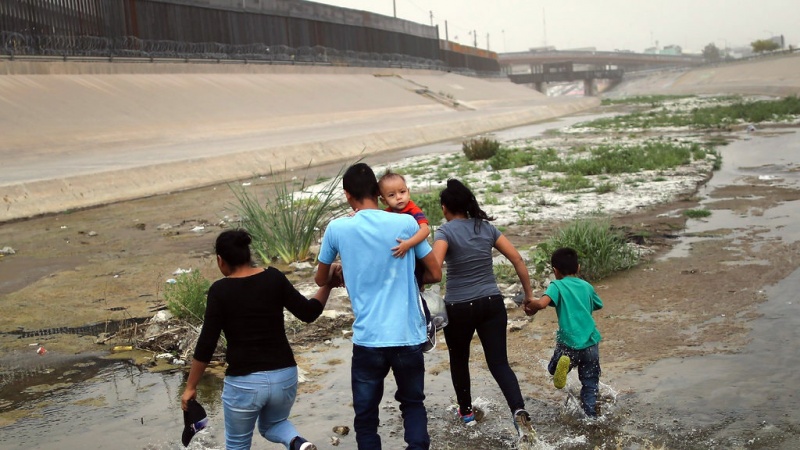Iran Press/America: The deal, announced by Donald Trump via tweet on Friday night, is said to include plans to return migrants seeking asylum to Mexico, where they will remain until their claims can be processed.
"I am pleased to inform you that The United States of America has reached a signed agreement with Mexico. The Tariffs scheduled to be implemented by the U.S. on Monday, against Mexico, are hereby indefinitely suspended," he said. "Mexico, in turn, has agreed to take strong measures to... stem the tide of Migration through Mexico, and to our Southern Border. This is being done to greatly reduce, or eliminate, Illegal Immigration coming from Mexico and into the United States. Details of the agreement will be released shortly by the State Department. Thank you!"
This is while, the Mexican government had already pledged to deploy its National Guard throughout Mexico, giving priority to its southern border in March during secret talks in Miami between Kirstjen Nielsen, then the secretary of homeland security, and Olga Sanchez, the Mexican secretary of the interior, the officials said.
The centerpiece of Mr. Trump’s deal was an expansion of a program to allow asylum-seekers to remain in Mexico while their legal cases proceed. But that arrangement was reached in December in a pair of painstakingly negotiated diplomatic notes that the two countries exchanged. Ms. Nielsen announced the Migrant Protection Protocols during a hearing of the House Judiciary Committee five days before Christmas.
The deal's key expansion of a program which negotiators had failed to achieve in the past few weeks was to persuade Mexico to accept a “safe third country” treaty that would have given the United States the legal ability to reject asylum seekers if they had not sought refuge in Mexico first.
The US President’s decision to use trade as a bludgeon against Mexico was driven in part by his obsession with stopping what he falsely calls an invasion of the country and in part by a desire to satisfy his core supporters, many of who have grown angry at his inability to build his promised border wall.
Having threatened Mexico with an escalating series of tariffs — starting at 5 percent and growing to 25 percent — the president faced enormous criticism from global leaders, business executives, Republican and Democratic lawmakers, and members of his own staff that he risked disrupting a critical marketplace.
After nine days of uncertainty, Trump backed down and accepted Mexico’s promises.
 Migrants passing through the Rio Grande River from Mexico into the United States
Migrants passing through the Rio Grande River from Mexico into the United States
In May, Trump had lots of difficulties with the immigrants when the numbers of illegal immigration spiked to the highest levels of his presidency. During the week of May 24, 5,800 migrants — the highest ever for one day — crossed on a single day. That was quickly followed by a group of 1,036 migrants who were caught on surveillance cameras crossing the border en masse.
On May 31, US President started a trade war with Mexico as he announced on Thursday that he would add 5 percent to tariff on Mexico beginning in early June.214/213
Read more:
Trump starts trade war with Mexico

